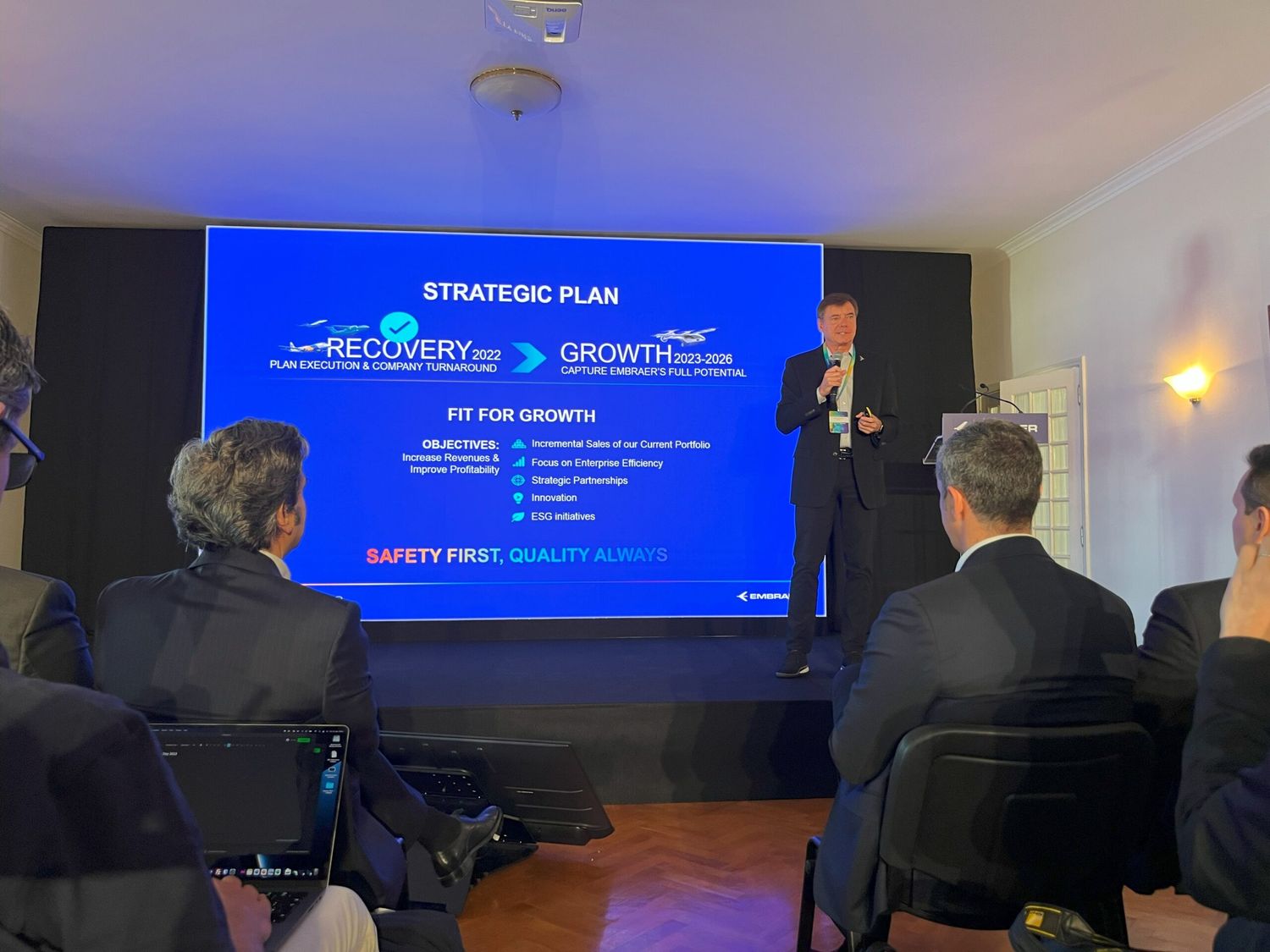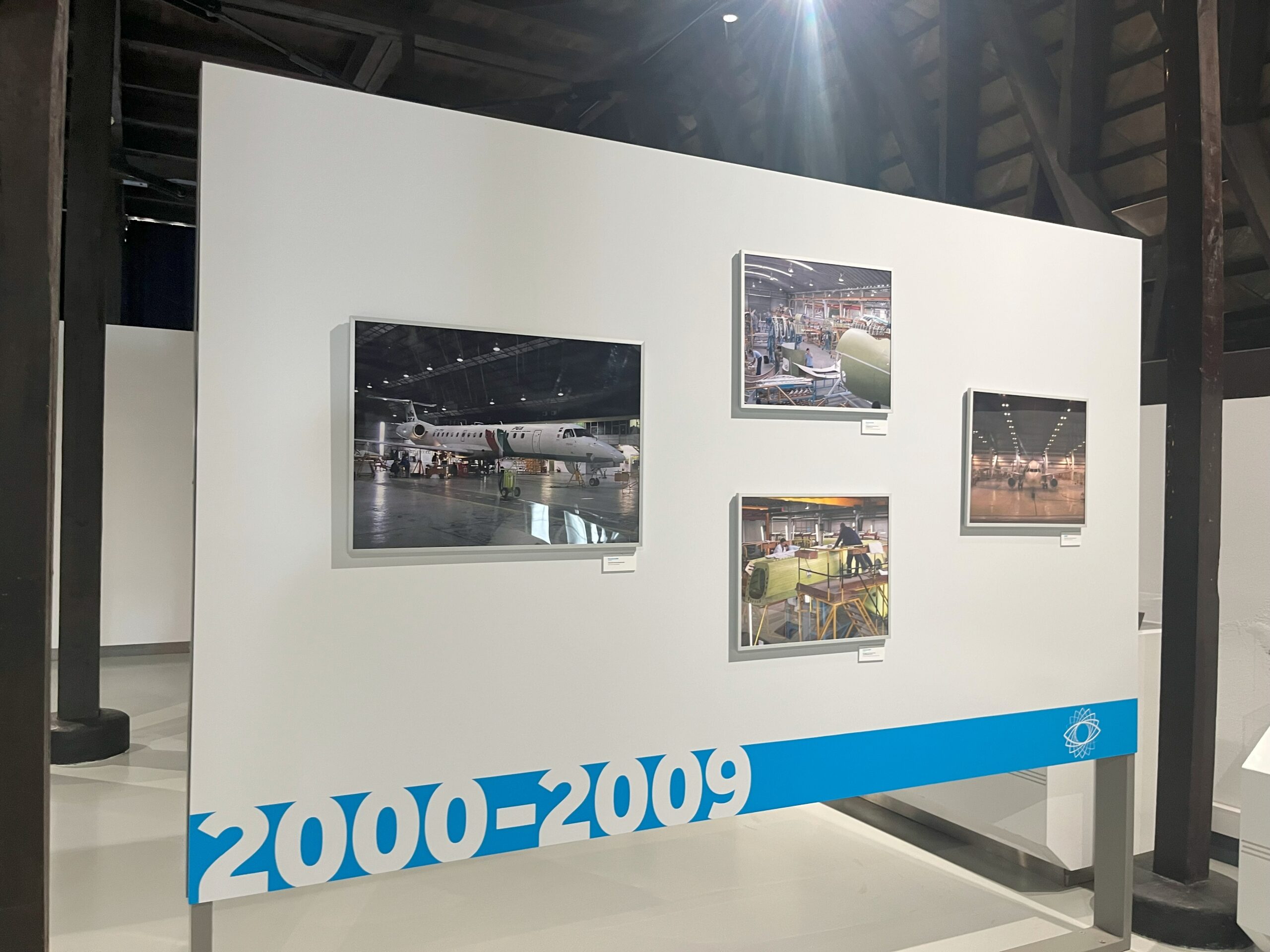Embraer promoted its Media Day 2023 last week in its facilities at Alverca do Ribatejo, a city 20 km north of Lisbon Airport.
In Alverca lie the headquarters and facilities of OGMA, an MRO provider which is controlled by Embraer.
At the invitation of the Brazilian aircraft manufacturer, Aviacionline took part in the event, which actually took place across two days. Aimed at depicting Embraer’s outlook to coming years and showcasing its main products, it counted with presentations by high-level executives of the company.
Day 1 began with a presentation by the company’s Chief Executive Officer, Francisco Gomes Neto, with a quick brief on Embraer’s overall positioning after the existential crisis of COVID, which came along with the failed sale of the Commercial division to Boeing.
According to Neto, while up to 2022 the order of the day was «recovery», Embraer’s focus from 2023 to 2026 is «growth».
The executive confirmed there are no immediate deals for the Embraer E2 family coming from the United States. Porter Airlines’ E195-E2 operation in Canada, he said, «can help us to open some doors», he said, adding that «we also talk [with US airlines] about the E2″, but that nothing has come out of it yet.
The second presentation of day 1 was performed by Embraer’s Chief Financial Officer, Antonio Garcia, who outlined the company’s financial state and its pandemic turnaround.
90% of the group’s revenues, he said, come from out of Brazil, speaking about the company’s resilience as an internationalized company. «If Brazil breaks, we continue to survive».
Embraer, said Garcia, intends to be net debt-free by 2027, with the manufacturer reaching an investment grade already by 2024.
Speaking of the outlook for the new government in Brazil, the executive said that currently 30 to 35% of the backlog is financed with the help of BNDES — the country’s economic development bank — and that currently dependency is low enough not to be an issue.
While Garcia remarked that this figure used to be much higher, the new administration is «much more proactive towards new opportunities». It is more assisting in terms of «geopolitical support for campaigns», he added.
The third presentation was conducted by Embraer’s head of the newly-created Procurement vice-presidency, Roberto Chaves.
Chaves outlined Embraer’s efforts to bring the company’s supply chain towards normalization — this has been one of the critical nuisances for aircraft manufacturers since 2021.
One of the issues, he said remarking his past experience in the automotive industry, is that the volumes of aircraft manufacturing are much lower versus car manufacturing. Defective (supplied) parts per million in the aircraft industry are measure at the «thousands», while at the auto industry these are measured at the «hundreds», he said.
This year the focus at his area is to keep pushing suppliers towards stability, Chaves added, with the programs that reward well-performing providers already showing signs of success.

After the procurement presentation, we were invited for a visit to OGMA’s Historical Center.
After lunch, OGMA’s CEO, Paulo Monginho, took over to speak briefly about Embraer’s Services and Support division, but mainly about OGMA.
The company, which also assists at the assembly of the C-390 Millenium, will increase its engine maintenance capabilities — to support the Pratt & Whitney GTF — over the coming years, eventually doubling in size.

Then, we were brought to OGMA’s hangars and engine facilities.

Amongst some other very rare sights for aviation enthusiasts, the highlight perhaps was Embraer E190-E2 PS-LMP, owned by Brazilian start-up Placar Linhas Aéreas.
Barely ever seen to this day, the aircraft is being prepared for delivery. It was previously Embraer’s «Tech Shark» demonstrating aircraft.

The last presentation of the day was given by Embraer’s Senior Vice-President of Engineering and Technology, Luís Carlos Affonso.
Affonso brief the audience about the efforts Embraer has made over the years in aircraft development. At this stage, he said, the Embraer E2 has «matured» above its predecessor, the E1, in terms of schedule reliability.
The other half of his address focused on the company’s innovation efforts, including the development of sustainable solutions for the future, considering it has its target for net-zero carbon emissions by 2050.
According to Embraer’s roadmap, a slide said, different aircraft families will require different solutions. For instance, fully electric propulsion would be restricted at most for aircraft of up to 19 passengers, with other options (distributed amongst larger aircraft) being liquid hydrogen, sustainable aviation fuels and hybridity.
Affonso also spoke about autonomy, albeit not giving any hints on timelines, albeit outlining it as a focus of Embraer’s research efforts for the long-term.
About the issues with the Pratt & Whitney engines, that have also been plaguing the E2 family, he said that Embraer has a dedicated team at P&W’s facilities, in order to keep track of and better develop any coming updates.















Comentarios
Para comentar, debés estar registrado
Por favor, iniciá sesión